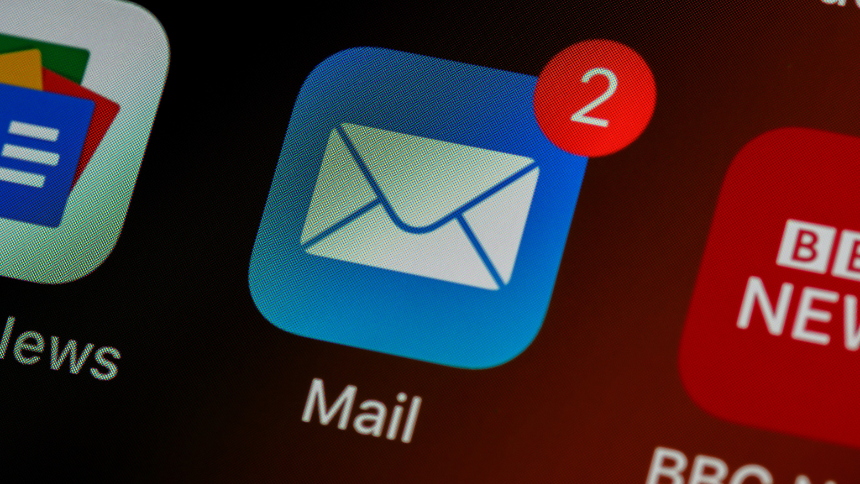The Psychology Behind Lasting Impressions in Digital Marketing
Creating a lasting impression is the Holy Grail of marketing – the moment when your brand becomes etched into the minds of consumers. This psychological phenomenon hinges on understanding the intricate interplay between human cognition, emotions, and behavior. Delve into the fascinating realm of marketing psychology to unearth the secrets behind crafting impressions that stand the test of time.
Emotional Resonance: Connecting on a Deeper Level
Emotions drive decision-making. Brands that evoke powerful emotions forge connections that linger. The mere sight of a logo or hearing a jingle triggers a flood of emotions, reinforcing the brand’s identity in the consumer’s memory.
Scarcity and FOMO: The Urge to Secure
The fear of missing out (FOMO) is a potent psychological trigger. By employing limited-time offers or highlighting scarcity, marketers stoke the desire to secure what’s perceived as exclusive. This urgency cements the brand’s impression as an opportunity not to be missed.
Storytelling Mastery: Engaging Narratives
Humans are hardwired for stories. Brands that weave compelling narratives captivate audiences, embedding their essence in listeners’ minds. A well-crafted story has the power to evoke emotions, instill values, and establish an enduring connection.
Social Proof: The Influence of the Crowd
People often look to others for guidance. Social proof, in the form of reviews, testimonials, or endorsements, assures consumers of a brand’s credibility. This validation shapes perceptions and leaves an imprint of trust.
Reciprocity: Building Bonds Through Giving
The principle of reciprocity asserts that people feel obliged to return favors. Brands that offer value, whether through content, free resources, or personalized experiences, trigger a sense of indebtedness. This reciprocity fosters a lasting positive impression.
Color Psychology: Visual Impact
Colors evoke emotions and associations. Brands harness the psychology of color to trigger specific feelings. Whether it’s the excitement of red, the trust of blue, or the serenity of green, color choices contribute to a lasting visual memory.
Primacy and Recency Effect: Strategic Timing
The primacy effect favors the first thing encountered, while the recency effect favors the most recent. Marketers capitalize on these effects by placing key brand messages at the beginning and end of interactions, maximizing retention.
Crafting a lasting impression is an intricate dance between science and art, psychology and creativity. By understanding and strategically employing these psychological principles, marketers wield the power to etch their brand’s essence deep within the minds and hearts of consumers, ensuring their presence resonates long after the initial encounter.
The Power of Social Proof in Building E-Commerce Trust
Trust plays a critical role in determining the success of e commerce businesses. But standing out amidst fierce competition can be tough without establishing credibility with potential customers. How do you achieve that?
One effective way is through social proof – the art of highlighting positive feedback from existing customers.
Social proof has the psychological power to instill trust among your audience by displaying customer reviews, ratings, testimonials on your website or social media platforms showcasing high quality offerings that are reliable. This approach even has the ability to enhance visibility and improve search engine rankings by boosting your businesss credibility.
At Nectar we know how vital it is to build trust through social proof for e commerce businesses like yours! We specialize in designing tailored strategies that feature compelling endorsements curated from various sources such as case studies,influencer based content,user generated content etc. all aimed at driving engagement and sales.
When it comes to ecommerce success in todays digital landscape one thing has become clear: Social proof matters. Consumers have countless options at their fingertips when shopping online; therefore they’re naturally drawn towards brands that have established their credibility and earned customer trust. Social proof- prominently displayed customer reviews combined with testimonials- offer an effective means of demonstrating product quality and services’ value.
Integrating social proof into e commerce websites can influence the 93% of your customer read online reviews before buying a product. It’s simple: people are most likely convinced by seeing what others who have already tried products or services think of them! Therefore this form of marketing allows buyers looking for additional information before making decisions about buying from you.
In addition to this traditional method of using customer driven comments/ endorsements offers other types of great boosts to online credibility. For instance industry experts influencers’ approvals, and certifications in the form of badges from widely recognized organizations.
In conclusion building a digital marketing strategy that leverages social proof is vital for driving ecommerce success in todays competitive market. Creating trust among customers is crucial in establishing a strong online presence.
Maximizing Your Digital Marketing Budget
Digital marketing can quickly become costly, especially for small businesses. To help you get the most out of your digital marketing budget, here are five tips to consider:
Set clear goals:
Before starting any digital marketing campaign, it’s essential to set clear goals. Identify what you want to achieve and the metrics you will use to measure success.
Focus on your target audience:
To maximize your digital marketing budget, you need to ensure that your message is reaching the right people. Identify your target audience and tailor your campaigns to appeal to their specific interests and needs.
Invest in social media:
Social media platforms are an excellent way to reach a large audience at a low cost. By investing in social media advertising, you can target specific demographics, increase brand awareness and generate leads.
Create valuable content:
High-quality content is the cornerstone of any successful digital marketing campaign. By creating valuable and informative content, you can establish your brand as a thought leader in your industry, increase website traffic and generate leads.
Analyze and optimize:
It’s essential to analyze the results of your digital marketing campaigns continually. By tracking metrics such as website traffic, conversion rates and social media engagement, you can identify what’s working and what’s not, and optimize your campaigns accordingly.
By following these tips, you can maximize your digital marketing budget and achieve better results with less money spent.
The Ultimate Social Media Cheat Sheet: Image Sizes and Tips
Are you tired of constantly searching for the right size for your social media images? Don’t worry; we’ve got you covered with our ultimate social media cheat sheet. We’ve compiled the most common social media image sizes and included some helpful tips to make your images stand out.
A professional networking platform where users create profiles and connect with other professionals, join groups and follow companies in their industry. It is commonly used for job hunting, career development, and business networking.
Tips:
We recommend using high-quality head-shot or images to attract attention and your visual stand out. On your business banner, remember to include your tagline on the right to not overlap with your profile picture on the left.
- Square post: 1200px x 1200px.
- Article post: 2000px x 600px.
- Business profile banner: 1128px x 191px.
- Profile picture: 800px x 800px.
A social networking platform that allows users to create a profile, connect with friends, and share updates, photos, and videos. It has various features such as groups, business pages, and events, which allow users to interact with others who share similar interests.
Tips:
On your posts, use bright colours, a maximum of 20% text to grab attention and high-quality image that represents your brand’s personality and mission.
- Square post: 1080px x 1080px.
- Business cover: 1640px x 924px.
- Shared link post: 1200px x 630px.
- Profile picture: 1500px x 1500px.
A photo and video sharing platform where users can share their daily lives, hobbies, and interests through visual content. It has various features such as stories, reels, and IGTV, which allow users to create and share short-form videos. It is popular among influencers, celebrities, and businesses as a tool for marketing and brand building.
Tips:
Prioritize 50%+ of your content to engaging video and add music to grab attention. Use visually appealing and minimalistic images that highlight your brand’s products or services.
- Reels: 1080px x 1920px.
- Landscape post: 1080px x 566px.
- Portrait post: 1080px x 1350px.
- Profile picture: 320px x 320px.
- Square post: 1080px x 1080px.
TikTok
A short-form video sharing app where users can create and share videos set to music or audio clips. It has become popular for its algorithm-driven content discovery and the ability for users to create viral content quickly. It is primarily used for entertainment and has become a platform for influencers and brands to reach younger audiences.
Tips:
To boost your account authority, stay ahead with the current trends, use the right hashtags and keep your videos short and snappy.
- Portrait post: 1080px x 1920px.
- Profile picture: 200px x 200px.
A microblogging platform where users can share short messages, known as tweets, with their followers. It is commonly used for real-time news updates, commentary, and conversation on various topics. It is popular among journalists, politicians, and celebrities for its ability to quickly disseminate information to a large audience.
Tips:
Limit to 1-2 hashtags per Tweet, be conversational, keep your copy short and sweet and use images, GIFs, and/or videos whenever possible. Remember also to include your tagline on the right of your banner.
- Post: 1600px x 900px.
- Profile picture: 400px x 400px.
- Header: 1500px x 500px.
Youtube
A video sharing platform where users can upload, watch, and share videos on a wide range of topics. It is used for entertainment, education, and information sharing, and has become a popular platform for content creators to build a following and monetize their content.
Tips:
Use a visually appealing image that represents your brand’s mission and includes your brand’s tagline.
- Business cover banner: 2560 × 1440 px.
- Profile picture: 800px x 800px.
With this social media cheat sheet, you can create visually appealing images that accurately represent your brand on all social media platforms. Remember to use high-quality images, minimal text, and brand-specific colours to create a consistent brand image across all platforms.
From Groovy to Lit: The Evolution of Slang Words Across Generations
Slang words are a staple in modern language, but they are constantly evolving, especially across different generations. What was once considered cool and hip in the past is now outdated and even cringe-worthy. In this article, we’ll take a closer look at how slang words have evolved across generations and how brands can integrate them into their marketing strategies.
Slang Words Across Generations
Each generation has its own unique set of slang words that reflect its culture and experiences. For example, baby boomers used phrases like “groovy” and “far out” in the 1960s and 1970s, while Generation X popularized words like “rad” and “totally” in the 1980s and 1990s. Millennials, on the other hand, introduced words like “lit” and “on fleek” in the 2010s, while Gen Z has popularized terms like “stan” and “cancel” in recent years.
Brands that understand and integrate the latest slang words into their marketing strategies connect with their target audience in a more meaningful and authentic way.
Integrating Slang Words into Marketing Strategies
When it comes to integrating slang words into marketing strategies, it’s important to consider the target audience. For example, if a brand is targeting baby boomers, using phrases like “groovy” and “far out” may resonate with them. However, if a brand is targeting Gen Z, using terms like “dank” and “glow up” may be more effective.
Integration tips:
- Understand the target audience and the slang words they use.
- Use slang words in a natural and authentic way. Forced or awkward usage can backfire and make the brand seem out of touch.
- Stay up-to-date on the latest slang words and trends. Slang words are constantly evolving, so it’s important to stay current.
- Avoid using slang words that may be offensive or insensitive. Some slang words have negative connotations, so it’s important to be aware of their meanings and contexts.
- Test and measure the effectiveness of using slang words in marketing campaigns. This will help brands determine which words resonate with their target audience and which ones don’t.
Slang words are a dynamic aspect of language that evolves with each generation. Brands that understand and integrate the latest slang words into their marketing strategies can connect with their target audience in a more meaningful and authentic way.
Boost Your Website Loading Speed in 2023: Top Tips to Follow
A slow-loading website can be frustrating for users, leading to high bounce rates and low conversions. Optimizing your website’s loading speed is crucial to keep your audience engaged and ensure that they have a seamless user experience. Here are some top tips to follow in 2023:
Use a Content Delivery Network (CDN)
A Content Delivery Network (CDN) is a network of servers located in different regions worldwide that can distribute your website’s content to users. By using a CDN, your website’s content can be delivered from the nearest server to the user, reducing the time it takes for the website to load.
Optimize Your Images
Images are an important aspect of a website, but they can also slow down the loading speed. Optimize your images by compressing them without affecting their quality. This can significantly reduce their size and speed up your website.
Minimize HTTP Requests
HTTP requests refer to the number of times your website sends a request to the server to load a particular file. Minimizing HTTP requests can speed up your website’s loading time. To minimize HTTP requests, consider reducing the number of plugins and scripts on your website.
Use Caching
Caching is a process of storing frequently accessed data on the user’s device, allowing the website to load faster. By using caching, your website can avoid making multiple server requests, leading to faster loading times.
Upgrade Your Hosting Plan
Choosing a reliable web host that offers fast loading speeds is crucial for optimizing your website. Consider upgrading your hosting plan to ensure that your site is hosted on a fast and reliable server.
By following these tips, you can enhance your website’s loading speed, improve user experience, and boost your website’s performance. Regularly monitoring your website’s loading speed and making changes accordingly can help you stay ahead of the competition.
The Future of Branding in a Digital World
The future of branding is becoming increasingly digital. Here are a few trends and predictions for what’s next in the world of digital branding:
1. Personalization:
As consumers become more accustomed to personalized experiences, brands will need to find new and innovative ways to tailor their messaging and offerings to individual customers.
2. Augmented Reality:
With the rise of AR technology, brands will have new opportunities to create immersive and interactive experiences that blur the lines between the physical and digital worlds.
3. Voice Search:
As more consumers rely on voice assistants like Siri and Alexa, brands will need to optimize their content and messaging for voice search queries.
4. Artificial Intelligence:
As AI technology continues to advance, brands will be able to leverage data and analytics to deliver highly targeted and personalized messaging and experiences to customers.
At our digital marketing agency, we stay on the cutting edge of emerging trends and technologies in digital branding. If you’re looking to future-proof your branding strategy and stay ahead of the curve, contact us today to learn how we can help.
Let us help you build a brand that’s ready for whatever the future holds.
The Importance of Website Maintenance
Your website is a critical component of your online presence and brand image. As such, it’s essential to invest in ongoing website maintenance to keep your site up to date, secure, and optimized for success. In this article, we’ll explore the importance of website maintenance and its impact on your business:
Improved User Experience
Regular website maintenance ensures your site is user-friendly, easy to navigate, and free from bugs and errors that can negatively impact the user experience.
Increased Security
Regular updates and maintenance can help protect your site from security threats and prevent potential data breaches.
Enhanced Performance
Website maintenance can help improve site speed and performance, which is critical for user engagement and SEO.
Better SEO
By keeping your site updated with fresh content and optimized for search engines, website maintenance can help improve your site’s search engine rankings and attract more organic traffic.
Cost Saving
Investing in website maintenance can help prevent major issues and expensive fixes down the line, saving you time and money in the long run.
To ensure your website is always performing at its best, partner with a digital marketing agency that offers ongoing website maintenance services.
Don’t let your site fall behind.
Email Marketing 101: The Basics You Need to Know
Email marketing is a powerful tool that can help you connect with your target audience and drive sales. But if you’re new to email marketing, it can be overwhelming to know where to start.
We’ll break down the basics of email marketing, including what it is, why it’s important, and how to get started.
At its core
Email marketing involves sending promotional messages or newsletters to a list of subscribers. It’s a highly targeted form of marketing that allows you to reach people who have already expressed interest in your products or services. And because email is such a personal channel, it’s a great way to build relationships with your customers.
A powerful tool to connect with your audience and drive sales.
Get started with email marketing
You’ll need a few key components. First, you’ll need an email list. This can be built through a variety of channels, such as sign-up forms on your website, social media, or in-person events. You’ll also need an email marketing platform to send your messages and track your results. There are a variety of options available, ranging from basic tools like Mailchimp to more advanced solutions like HubSpot or Marketo.
Create a compelling message
Once you have your list and your platform, you’ll need to create your messages. This involves crafting a compelling subject line, writing engaging copy, and including eye-catching visuals. You’ll also want to personalize your messages and segment your audience to ensure you’re sending relevant content to each subscriber.
Overall, email marketing is a powerful tool that can help you connect with your audience and drive sales. By following these basic tips and best practices, you can create successful email campaigns that deliver results.
The Ultimate Website Creation Checklist
Creating a website can be a daunting task, especially if you’re not familiar with the process. However, by following a checklist of essential steps, you can ensure that your website is well-designed, functional, and effective.
1. Determine your website’s purpose and goals:
Before you start designing your website, you need to determine its purpose and goals. What do you want your website to achieve? Who is your target audience? Knowing these things will help you make informed decisions about the design, content, and functionality of your website.
2. Choose a domain name and web hosting:
Your domain name is the address people will use to access your website, and web hosting is where your website’s files will be stored. Choose a domain name that’s easy to remember and relevant to your business. Look for a reliable web hosting provider that offers the features and support you need.
3. Plan your website’s structure and content:
Create a sitemap or outline of your website’s pages and sections. Decide what content you’ll include on each page and how it will be organized. Keep in mind your website’s purpose and goals and your target audience’s needs and preferences.
4. Design your website:
Use a website builder or hire a web designer to create a visually appealing and user-friendly design. Choose a color scheme, typography, and imagery that reflects your brand and appeals to your audience. Make sure your website is easy to navigate and loads quickly.
5. Develop and test your website:
Build your website using the design and content you’ve planned. Test it thoroughly to ensure it’s functional and works well on different devices and browsers. Make sure it’s optimized for search engines and includes the necessary security features.
By following our checklist, create a website that meets your business needs, engages your target audience and stands out.
If you need help getting started, don’t hesitate to reach out to one of our experts for guidance and support.










